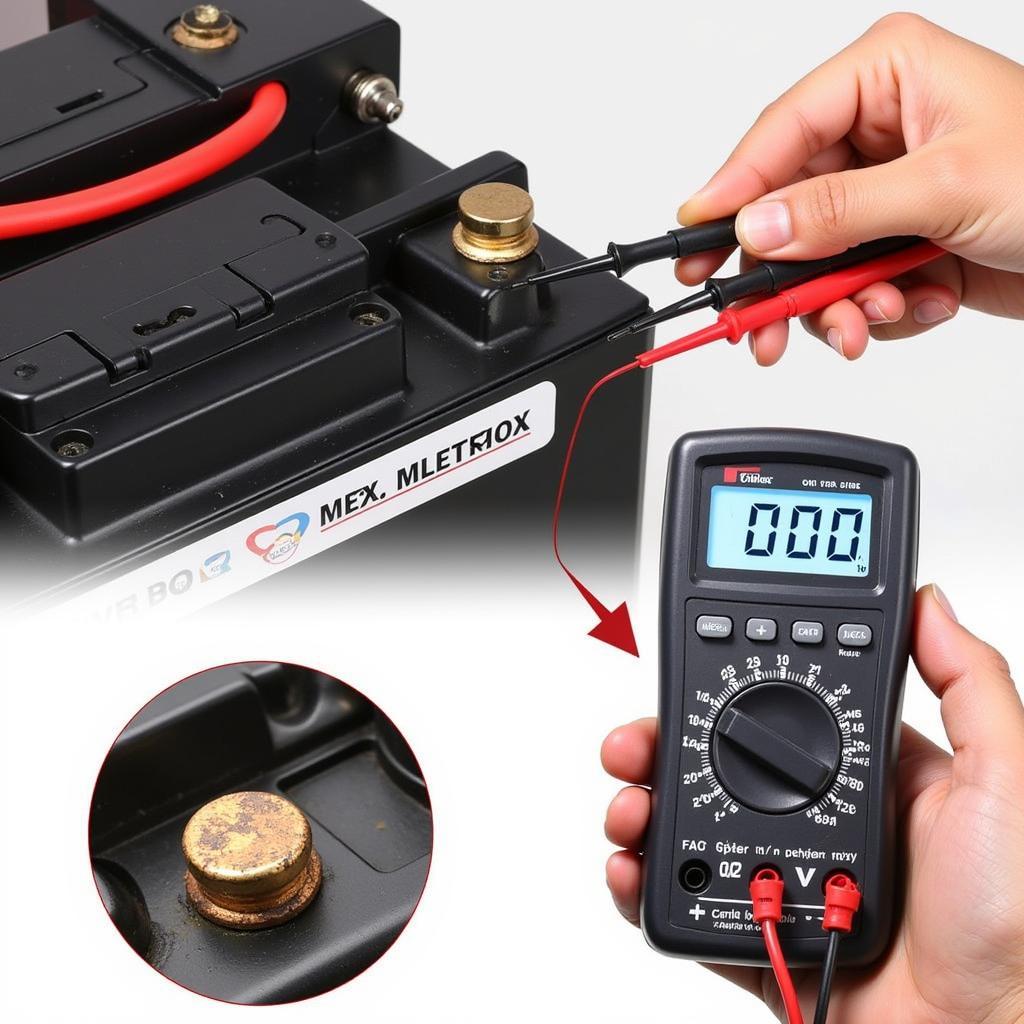Wiring a car radio directly to the battery can seem like a simple task, but it’s crucial to understand the implications and follow the correct procedure. Doing it wrong can lead to damage to your car’s electrical system or even a fire. This guide provides a step-by-step approach to wiring your car radio directly to the battery safely and effectively.
 Wiring a car radio directly to the battery: A step-by-step guide
Wiring a car radio directly to the battery: A step-by-step guide
Understanding the Basics of Wiring a Car Radio to the Battery
Why would you want to wire a car radio directly to the battery? Several reasons might lead you to this: troubleshooting a faulty car stereo system, installing an aftermarket radio, or needing a constant power supply for specific features. However, it’s not as simple as just connecting the wires. You need to consider fuses, wire gauge, and proper grounding. If you’re not familiar with these aspects, you might consider getting a radio and bluetooth player for car.
Importance of Fuses
Fuses are your safety net. They protect your car’s electrical system from overloads and potential fires. When wiring your car radio directly to the battery, always include an inline fuse close to the battery positive terminal. This fuse should be rated appropriately for your car radio’s power consumption. A blown fuse is a much cheaper fix than a fried electrical system.
Choosing the Right Wire Gauge
The wire gauge refers to the thickness of the wire. Using the correct gauge is crucial for safely carrying the required current to your car radio. Using a wire that’s too thin can cause overheating and potential fire hazards. Consult your car radio’s manual or a qualified electrician to determine the correct wire gauge for your specific setup.
Step-by-Step Guide to Wiring Your Car Radio Directly to the Battery
This section outlines the procedure for wiring your car radio directly to the battery. Remember, if you’re uncomfortable working with car electrical systems, it’s always best to consult a professional.
-
Disconnect the negative battery terminal: This is the first and most important safety step. Disconnecting the negative terminal prevents accidental shorts and potential injuries.
-
Locate the positive and negative wires on your car radio: Consult your car radio’s wiring diagram if necessary.
-
Install the inline fuse: Attach the inline fuse holder to the positive wire coming from the car radio. Make sure the fuse is the correct rating.
-
Connect the positive wire to the battery: Connect the positive wire (with the inline fuse) to the positive terminal of the battery.
-
Connect the negative wire to the battery: Connect the negative wire from the car radio to the negative terminal of the battery.
-
Reconnect the negative battery terminal: After all connections are secure, reconnect the negative battery terminal.
-
Test the car radio: Turn on the car radio to ensure it’s working correctly.
“Always double-check your connections before reconnecting the battery,” advises John Smith, Senior Automotive Electrical Engineer at AutoTech Solutions. “A loose connection can lead to all sorts of problems down the road.”
Potential Issues and Troubleshooting
While wiring a car radio directly to the battery can be a solution, it can also create problems if not done correctly. What happens if your battery working but car not starting? This could be unrelated, but always check your wiring.
Constant Power Drain
Wiring directly to the battery means your car radio will always have power, even when the car is off. This can drain your battery over time. Consider adding a switch to interrupt the power supply when the radio is not in use. You may need a 1998 dodge dakota car radio wiring diagram if you are working on an older car.
Noise Interference
Direct battery connections can sometimes introduce noise interference into your car radio. This can manifest as a buzzing or whining sound. Using high-quality wiring and proper grounding techniques can minimize this issue. You could also consider how to add bluetooth to a car radio to avoid extra wiring.
 Troubleshooting common wiring issues with car radios
Troubleshooting common wiring issues with car radios
“Proper grounding is key to minimizing noise interference,” says Maria Garcia, Lead Technician at Car Audio Experts. “Make sure you have a clean, solid ground connection.”
Conclusion
Wiring a car radio directly to the battery requires careful planning and execution. Following the steps outlined in this guide and using the correct materials will ensure a safe and successful installation. Remember, safety first! Always disconnect the negative battery terminal before working on any car electrical system. If you want to upgrade your sound system, a good option might be a car radio cd player with bluetooth.
FAQ
-
Why should I use a fuse when wiring directly to the battery? A fuse protects your car’s electrical system from overloads, preventing potential fires.
-
What gauge wire should I use? Consult your car radio’s manual or an electrician to determine the correct gauge.
-
Can I add a switch to control the power? Yes, adding a switch allows you to turn off the radio and prevent battery drain.
-
What causes noise interference? Poor grounding or low-quality wiring can introduce noise interference.
-
Is it safe to do this myself? If you are uncomfortable with car electrical systems, consult a professional.
-
What if my car radio still doesn’t work? Double-check your connections and consider seeking professional help.
-
What are the advantages of wiring directly to the battery? This can provide a stable power supply and can be useful when troubleshooting car audio issues.

